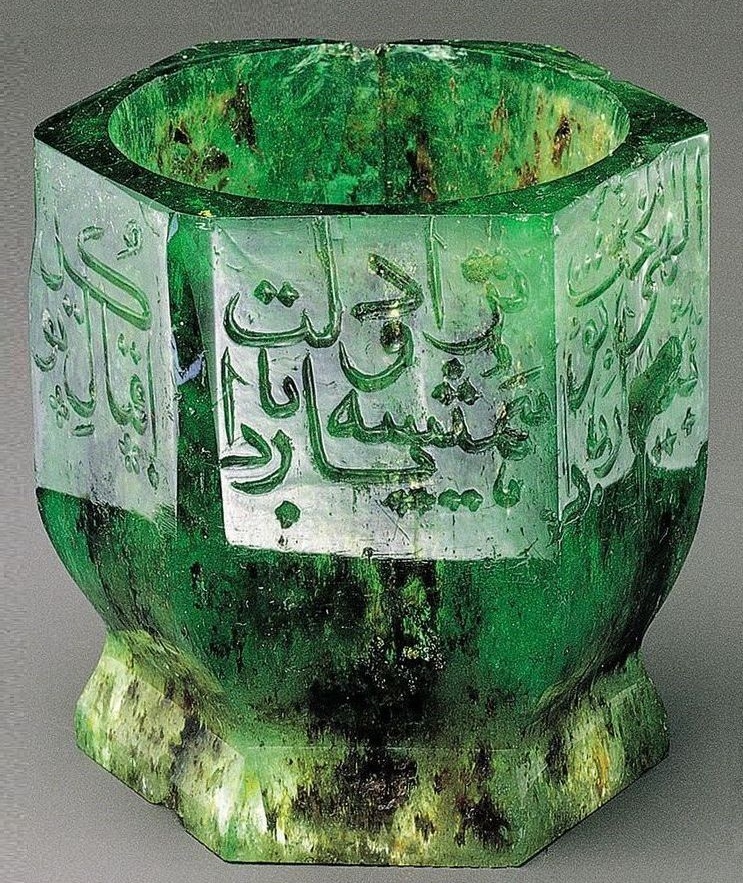FWP:
SETS == MUSHAIRAH
This verse puzzled me, but S. R. Faruqi explained it (Jan. 2003) as follows:
Emerald was a popular stone for making drinking vessels and even somewhat larger utensils, perhaps because a) it is soft to carve, b) it is a light stone, and c) it invariably has flaws, so an emerald with few or no flaws is extremely precious. Flawed emeralds can be used conveniently for vessel making. The spots on the leopard are supposed to be green because there is no word for 'brown' in Persian. Urdu also has two totally inappropriate words, bhūrā or katthāʾī . Whereas 'brown' has numerous shades. Hatim's dictionary defines 'brown' as qahvāʾī , that is, 'coffee-coloured'. A leopard's spots are best described in English as 'liver-coloured'.
So if the greenish/brownish-spotted emerald cup ultimately reminds the mad lover of a leopard's coat, it becomes only a further sign of his madness/wildness [vaḥshat], rather than of civilization and luxury. The madness/wildness of the lover's heart is as innate and unremovable as the leopard's spots. (There's also a nicely appropriate English proverb: 'A leopard can't change its spots'.) Another dāġh-e palang verse: {416x,9}.
For an additional example of wordplay involving palang , see Nasikh's verse cited in {112,9}.
This would have been an excellent mushairah verse; for more on this concept, see {14,9}.
The two kī constructions in the first line also strike the eye and ear. Although they look the same, the first is the feminine singular perfect of karnā , while the second is the feminine possessive adjective; both are agreeing with tadbīr . But you could almost read the line as, sāmān-e ʿaish-o- jāh ne tadbīr nah kī ( balkih us ne ) vaḥshat kī . That's not of course the intended reading, but it does seem to lurk somewhere on the borderline of awareness.
Two Mughal-period emerald cups:


Nazm:
That is, I consider an emerald cup to be a 'spot of the leopard', and madness increases. The theme of the verse is trifling, but the simile has given it life. (64)
== Nazm page 64